Introduction
Winx Club is an Italian cartoon—originally targeted at tween to early teen girls and currently targeted at an even younger audience—that has been more or less going on since the early 2000s. There’s 8 seasons, a bunch of movies, comic books, and as of very recently, a Netflix live action reboot that has very little in common with the source material besides some terminology and names.
If you want a detailed overview of what the Winx cartoon franchise is and what it had happen to it (it survived both 4Kids and Nickelodeon, for example, and had… Numerous English dubs), I highly recommend the series “History of Winx” by Unicorn of War – Thomas Vaccaro. He knows way more about the franchise than I ever could, and does a good job at explaining all the madness.
Very briefly, Winx Club the cartoon is about a group of girls who are fairies and attend fairy school in a magical realm among many more magical realms, get into wacky hijinks, save the world, acquire boyfriends, the works. The show is very upbeat, very sparkly, very ‘the true magic was friendship all along’ (and also the literal magic we shoot out of our hands while flying around because fairies). Its closest points of comparison are other Magical Girl Shoujo Anime series like Sailor Moon or Pretty Cure, with some Harry Potter-esque Magic School appeal thrown in.
Earlier seasons especially dipped into darker and more mature themes, and during the first four seasons, the girls all gradually aged, graduated, and got jobs. From what I understand, they eventually de-aged the girls to target a younger demographic and it’s been… A little weird ever since.
Just look at the evolving art styles, for example.
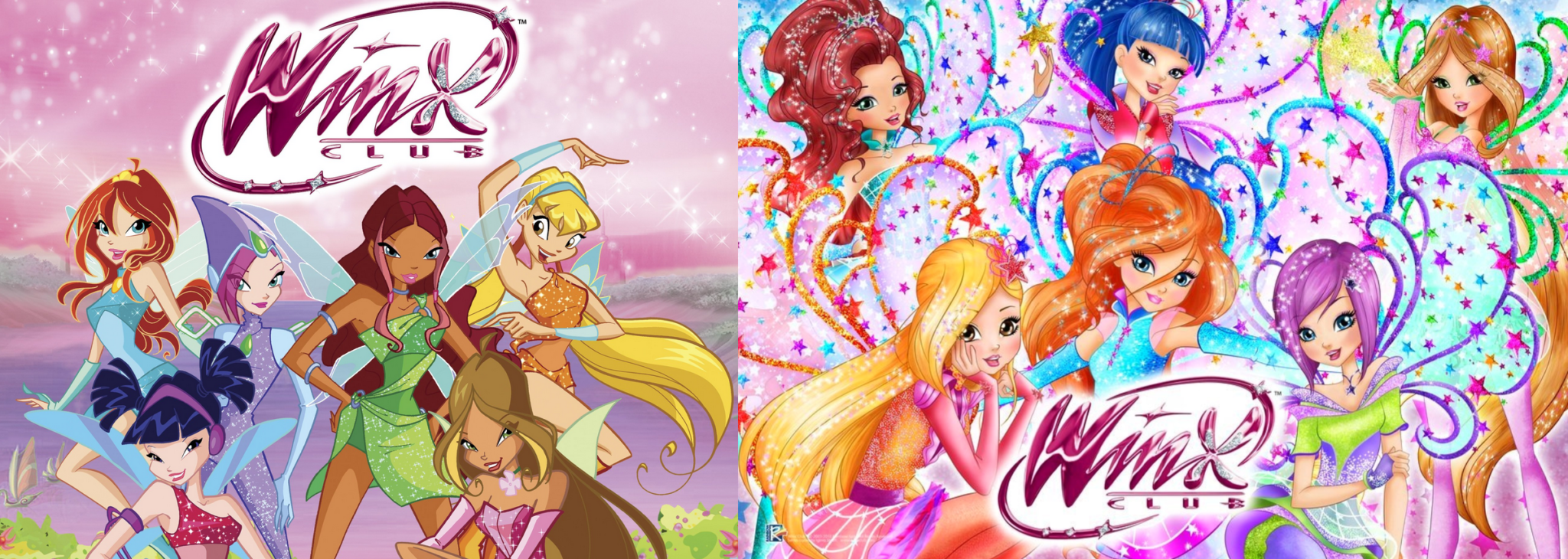
The live action reboot Fate: The Winx Saga is… A horse of a different color. Or a lot less color, to be precise. It is desaturated, has replaced all the sparkles with sex and drugs (but no Rock’n’Roll, even when it would have been appropriate, cowards), indulges in some actual horror themes and sequences, and confronts you with literal child soldiers and other war crimes along the way. Not that the original cartoon didn’t also have some child soldiers and some other war crimes, but, like, not like this.
The Netflix reboot is also a giant train wreck. But it didn’t have to be.
Owning My Biases
Let me start this off by saying that I was a very, very casual watcher of the Winx cartoon. I saw a few episodes of the first season on German television and remember being impressed with the final arc, and then I had season 1 and 2 on in the background while crocheting a giant Yoshi a few years ago. I remember the premise and the general gimmicks of the characters more than anything of the plot. I watched the reboot twice, first with nothing but my vague knowledge of the original cartoon, the second time after rewatching choice episodes from the first season, though the reboot, ah, also picks and chooses from elements later on in the franchise, let’s say.
Netflix currently has seasons 5 – 7 for me, and another reboot targeted at teens I think, called World of Winx. But you can watch all the early episodes in your choice of dub on YouTube! And the channel seems legit and official, even. The Winx wiki is meticulously maintained, has extremely detailed synopses of everything from episodes to outfits, but it also does this cutesy thing to your mouse cursor that makes it kind of insufferable to navigate. I’ll still cross-reference it, but be warned.
And the thing is, you need absolutely no knowledge of the original to follow the gritty live action reboot Netflix has bestowed upon us. Too much knowledge of the original is actually detrimental to the experience. But from what little I do know, I do find certain… Adaptational Choices to be very interesting.
So interesting, in fact, that this thing got a little out of hand. What you are looking at is part one of three; here, we are going to go over some general things, such as the setting, the look, and the plot. Part 2 is going to focus on the six five six main characters and what went wrong there (Spoilers: A lot, bordering on everything,) and Part 3 is going to to go into some other characters and my general take on why it is bad and how it could have easily, easily been improved.
Now without further ado, let me address what I am totally qualified to talk about as a white woman and what might be the first thing everyone notices when looking at pictures of the reboot:
The Whitewashing
Let’s get this out of the way immediately, shall we?
Ever since the first promotional works dropped, it was, ah, noted by the fandom that of the 6 main fairies of the original, only 4 made it into the reboot. Tecna was left out all-together, which sadly makes sense, as from what I understand, she was the least popular lead and sold the least toys. There’s also some significant changes to the setting that might have made them think a fairy of technology wouldn’t fit in here. That’s not the issue, though, as Tecna was one of the white (and depending on your dub, actually British) characters of the main cast.
A bigger issue is that they left out Flora altogether and replaced her with a white character called Terra.
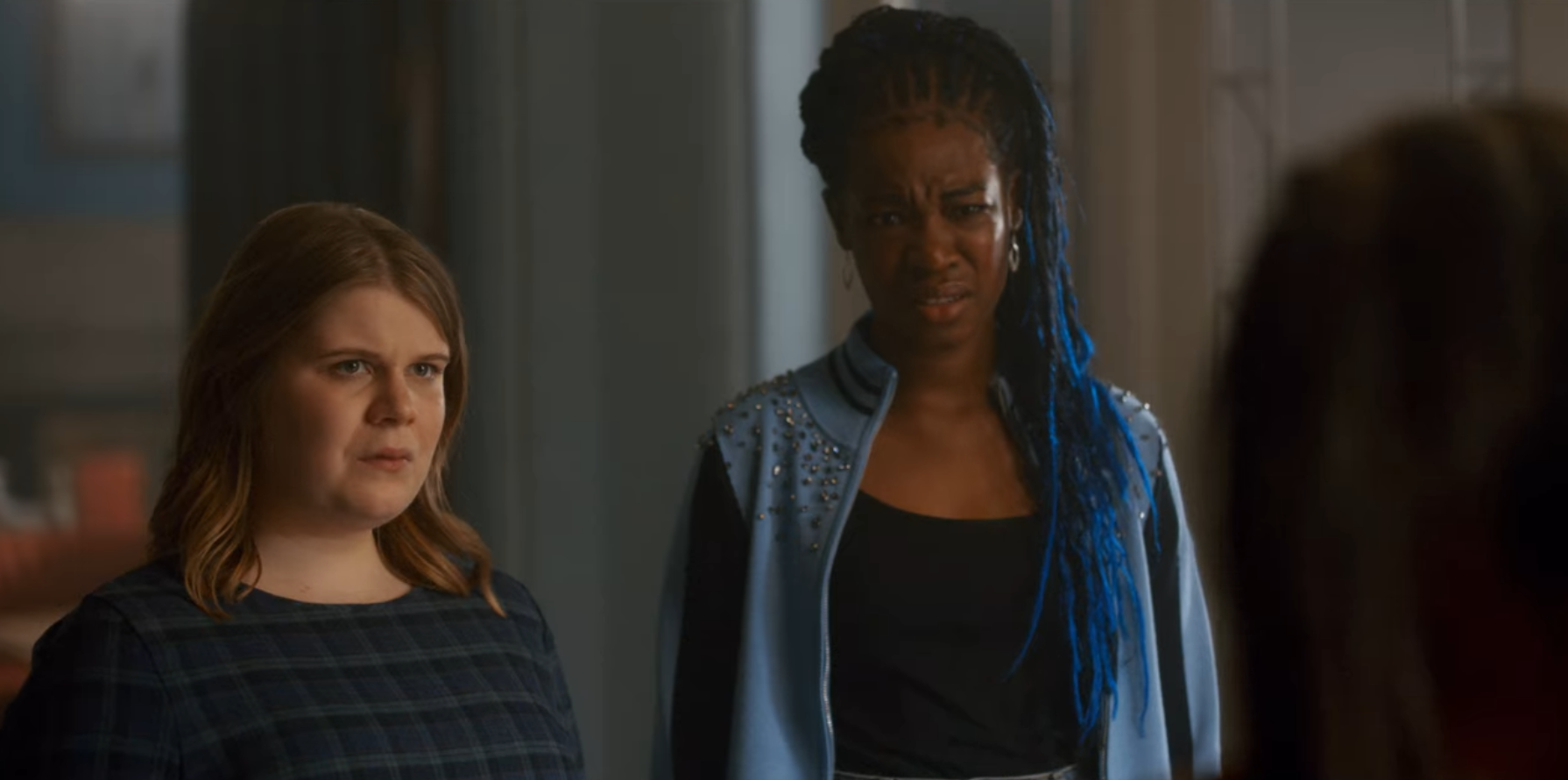
Now, in the original, the girls are fairies from fairy realms, so applying races and ethnicities from our world to them is a little difficult. However, Flora had a noticeably darker skin tone compared to the other girls and her design, according to the showrunner and creator Iginio Straffi, was based on Jennifer Lopez, so it has been widely accepted that the character is also Latina.
Instead of casting a Latina actress, however, they came up with an entirely new character, played by a white woman, who mentions a cousin called Flora in passing. Not the greatest look, that.
I’ll have words about Terra and the representation she is there to provide later on. It’s not exactly a good (or at all necessary) trade-off.
Now the show does include the black character Aisha (your dub might have called her Layla. Your dub was wrong.), who is introduced in the second season of the original. And why do I bring her up here if she’s, you know, present?
So I can showcase an unfortunate development that the show has gone through. You might already have spotted it from the evolution of art styles above.
See, even in the cartoon franchise, Flora and Aisha have undergone a gradual process of extreme whitewashing. Flora went from having noticeably darker skin than her peers to being so white, she is sometimes mistaken for Bloom on merch, and Aisha went from being very explicitly black (with some rather insensitive design choices maybe) to… Looking like Bloom with a dark filter in the current art style, and that’s when she’s not just looking white. Here’s a thread compiling all the whitewashing going on:
Oh, and there’s also Musa. Musa in the cartoon was coded east Asian and specifically based on Lucy Liu, so she was broadly assumed to be Chinese. It’s not quite as clear-cut here though, as the actress is, well, not Chinese, but apparently has some Singaporean heritage? Which is at least Asian, though implying that East Asian ethnicities are readily interchangeable any which way is also not a good look and perpetuates some very prevalent attitudes on the issue. It should also be noted that the actress is white passing, whereas the character she is supposed to be never was. So in the best case scenario, someone looked at her family tree and went “Asian enough” and called it a day, and that’s already more than the casting did for, you know, Flora. And in the worst case scenario, the casting process was “well, you have long, black hair and look cute in pigtails” and the Asian heritage when casting a character based on a Chinese actress was incidental.
The Aesthetic
This is a grittier reboot of a very colorful and sparkly cartoon. It is frequently not very well lit and the general look of the show is desaturated and just overall kind of dark. It also replaced any and all whimsical elements with more realistic looks. Compare, for example, Alfea Fairy College:
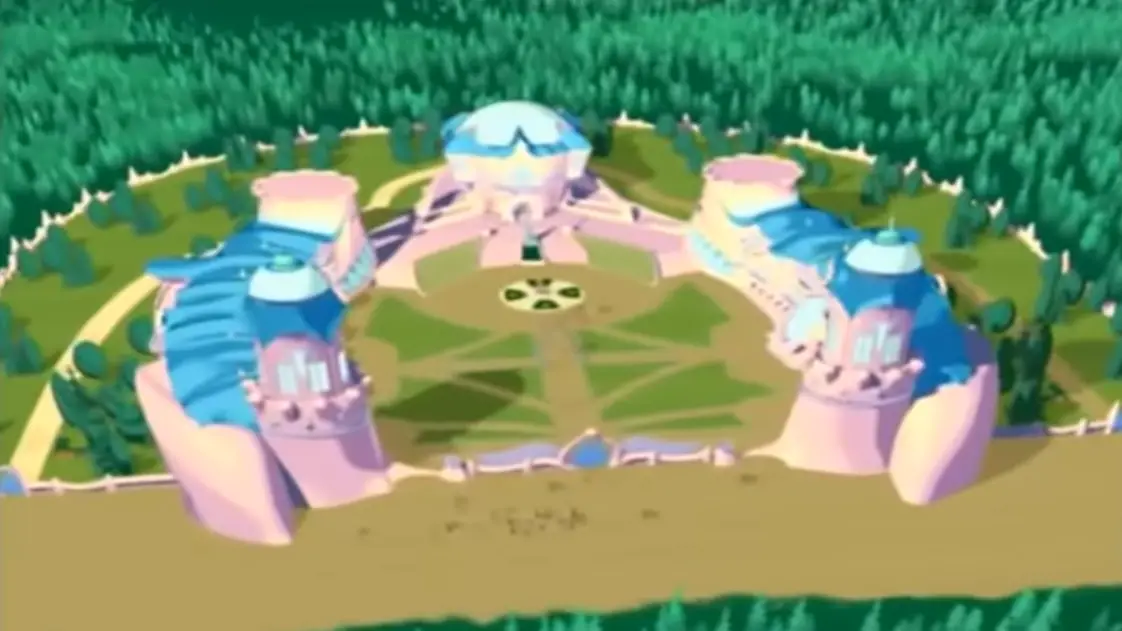
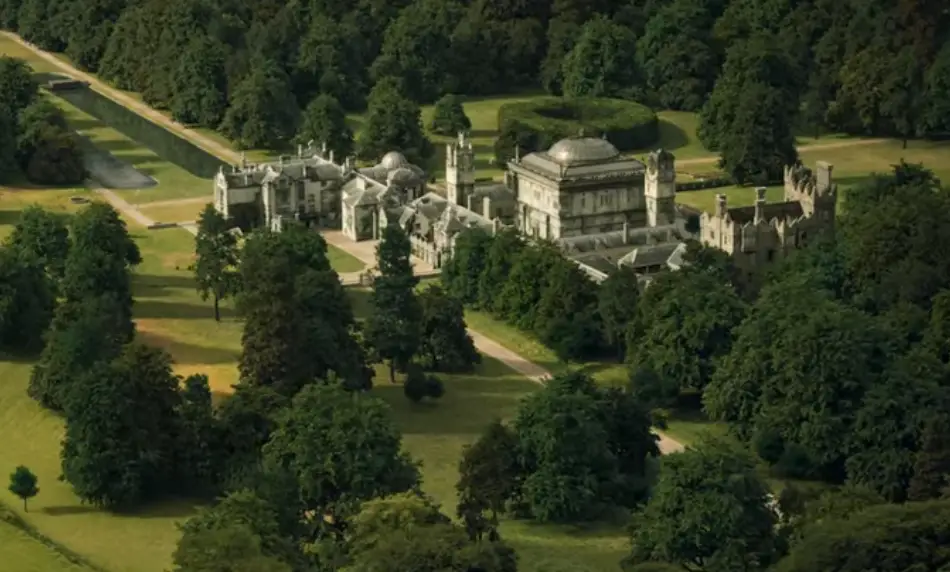
One of these things looks like a fairy college, on of them looks like an English Manor House that may or may not have served as a filming location for Hogwarts at some point.
I mentioned above that the Wiki keeps track of every single outfit the main characters have ever worn across 8 seasons, and there’s a reason for that. They change clothes a lot, outfits are kind of important, and the character designs and art styles are based on fashion sketches. The outfits are quirky, full of personality, and probably a little too revealing for your average 16-year-old and I understand that they wouldn’t have worked for a live action property.
The outfits on the show vary between what I have heard described as “Mom Blogger Chic,” not helped by the fact that not a single actor on this show looks young enough to be a Freshman in college, let alone at a school that starts at age 16, and outfits that are fine for semi fashion-conscious teenagers of Current Time.
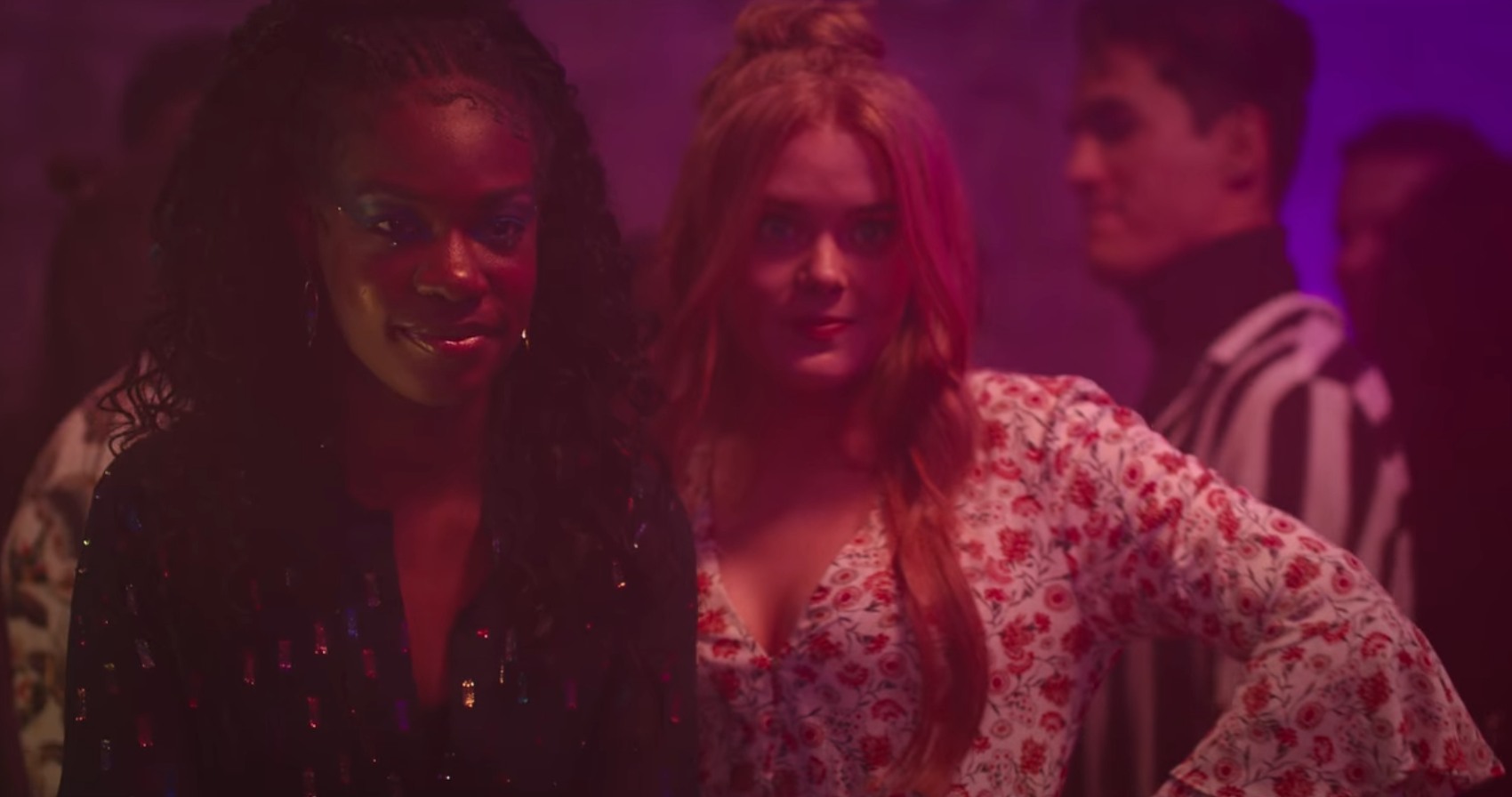
It is a little annoying that they went full Power Rangers with the color coding sometimes, though. Bloom the fire fairy wears a lot of red, Aisha the water fairy wears a lot of blue. The original was kinda fun in avoiding that; Bloom’s signature color was an aqua/turquoise shade and Aisha’s was green. Flora wore as much pink, if not more, as green, and her shades of green were brighter and softer than what Terra wears, whose signature color is closer to moss. I also think Bloom might wear more florals than her.
New Musa gets light pinks and purples instead, because Bloom is now hogging red, and Stella got all the pink the other characters tended to wear instead of her signature orange. And like, sure, yellow and orange are hard to pull off for blond girls, so this is probably just another case of “the actress looked good in pink so we went for it.” You know, the same reason Hermione’s Yule Ball gown couldn’t possibly a shade of blue because Emma Watson could never pull that off, and why light pinks and purples were turned into Stark colors because Sophie Turner wasn’t allowed to have gowns in other colors for several seasons.
Sorry for going on like that, but the fashion was apparently a big selling point for the original show. I don’t even have that much beef with the outfits, but if you look for a few seconds, you will find a plethora of YouTubers who have put their spin on what the fashion in the reboot should have looked like.
The boys also got hit with the no colors allowed boring stick. They wear either their training clothes or nondescript generic dark clothing, in stark contrast, maybe even starker than the girls, to the original. Honestly, the boys sometimes dressed as flamboyantly as the girls, it was just that kind of show.
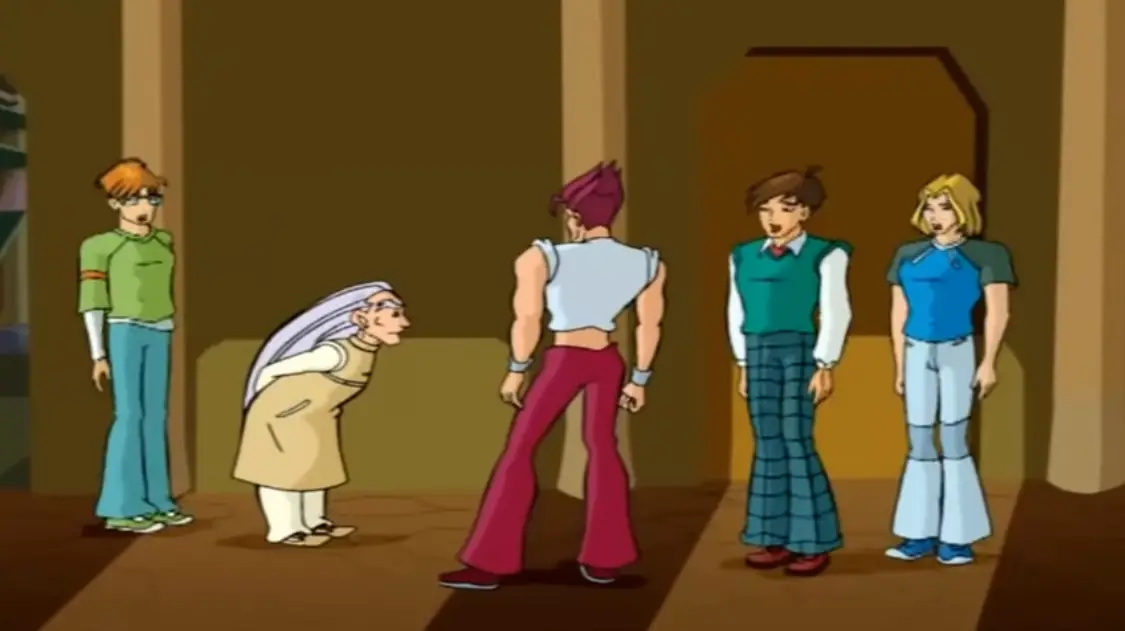
Lastly, what got me into the show was Netflix posting the, uh “transformation” of Bloom, which is technically a twist in the final episode but they posted it on their official Twitter, so, like. Hm.
This clip prompted me to observe that even at its most boring and lowest budget, Once Upon A Time had better special effects in the year 2012 and then I decided to check out this mess, assuming I would find special effects of similar quality.
Only I didn’t.
The “transformation” sequence looks bad. It does. The wings look bad, the sequence looks bad, it’s just. Did y’all run out of money at the finish line? That’s why you should do your money shots first, people.
Other than that, though? The magic looks fine.
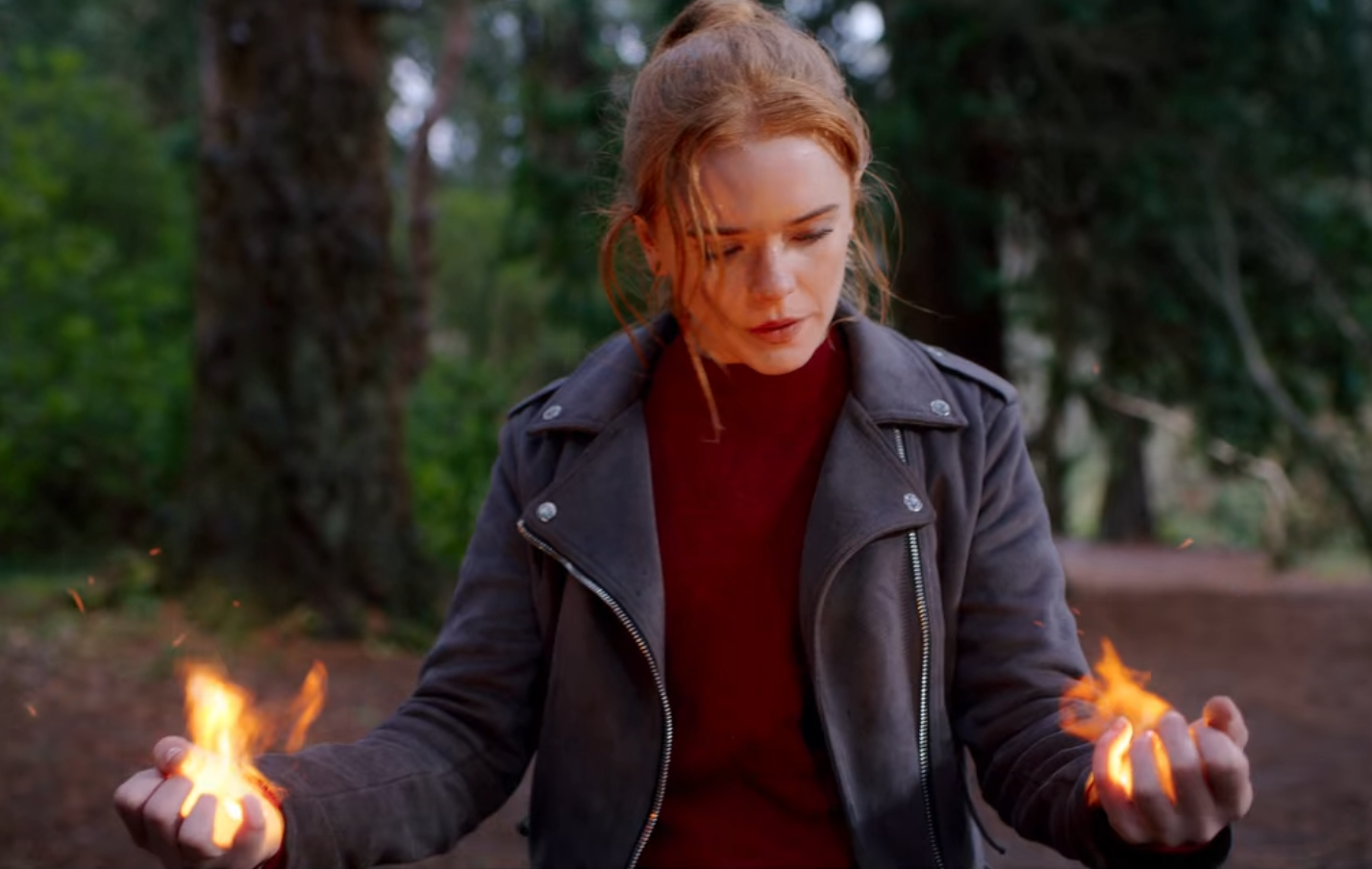
Sometimes the way the characters are lit up by their powers isn’t quite consistent with what is actually happening. Sometimes a character is not quite looking at the magical thing that is going on, but those are overall very minor issues. It’s not that distracting, it’s not that funny to look at, it’s… It’s fine.
The Setting
The story takes place at Alfea. Depending on your dub, in the original that was either a high school or a college for fairies in the realm of Magix. In the reboot, it’s a boarding school in the most British part of a magical parallel universe, namely the realm of Solaria.
The original had countless realms and planets full of different kinds of magical worlds, plenty of which we saw during weekly assignments for example. The reboot has… Seven realms, I guess. Ours is for some reason called the First World, the other six are the Otherworld. Okay. The First World is the only one without magic, that’s also true in the original until, like, season 4? I think?
Solaria, in both versions, is where Stella is from and what she stands to inherit as princess one day. It didn’t use to be where Alfea was located, though, but I will say that they at least do interesting stuff with these changes.
We don’t get to see many places that aren’t Alfea or the woods around it, though. We briefly see ruins on a cliff and Bloom’s hometown on earth. And what we do see of Alfea is… So boring. I understand that bright pink perky fairy school was not the kind of realistic aesthetic they were going for, I just think it’s sad that we seem to have decided that the only realistic magical school aesthetic available is Hogwarts. Not at all helped by the fact that they decided to make everyone except for Bloom Extremely British. And not just the people from Solaria; everyone who is not explicitly from California like Bloom has a British accent. Aisha and Musa and Sky shouldn’t all be from Solaria; that’s not the throne Sky stands to inherit. Yet they all have, at least to my ear, the same or very similar British accents. Hm.
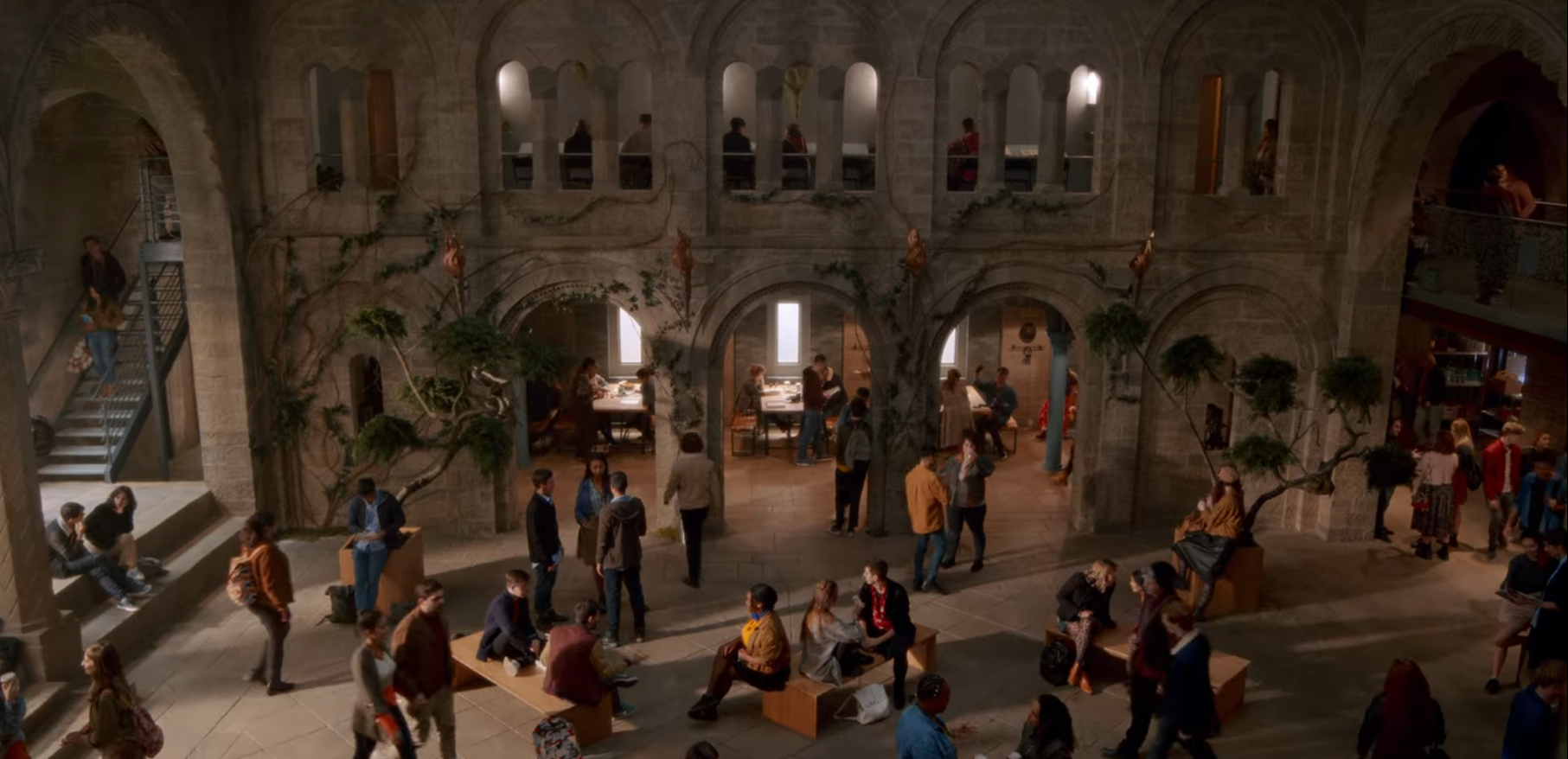
The show seems to be aware of this obvious comparison, by the way, and has two characters talk about their Hogwarts houses in the very first episode. Something very normal to do when you meet your new roommate. Hi, what’s your name, and please tell me you’re not a Gryffindor. More on that later.
But the fact that all the magical realms apparently have Harry Potter is… Interesting. They also have the same phones and cars we do, they access the same Google and the same Instagram we do, Bloom can just call her parents from her dorm room and it works fine, and what data plan covers otherworldly magical realms? And how can all these kids just post to literal Instagram and magic is still a secret? Or is it a one-way street and everyone uses earth’s commodities but what they do on it doesn’t get out? Then why do video calls to the school from California work?
The answer, of course, could and probably should be Magic™. And that’d be fine if it wasn’t so jarring. And it would be less jarring if not for the fact that by putting this show through a very generic British magic school filter, basically everything unique about the original setting of Magix was lost.
See, in Magix, technology is actually highly advanced; magic hasn’t caused it to stagnate but to do the exact opposite. There’s hovering vehicles, Bloom’s brand new earth phone is ancient tech to them. There is a fairy of technology. Tecna. The one they wrote out.
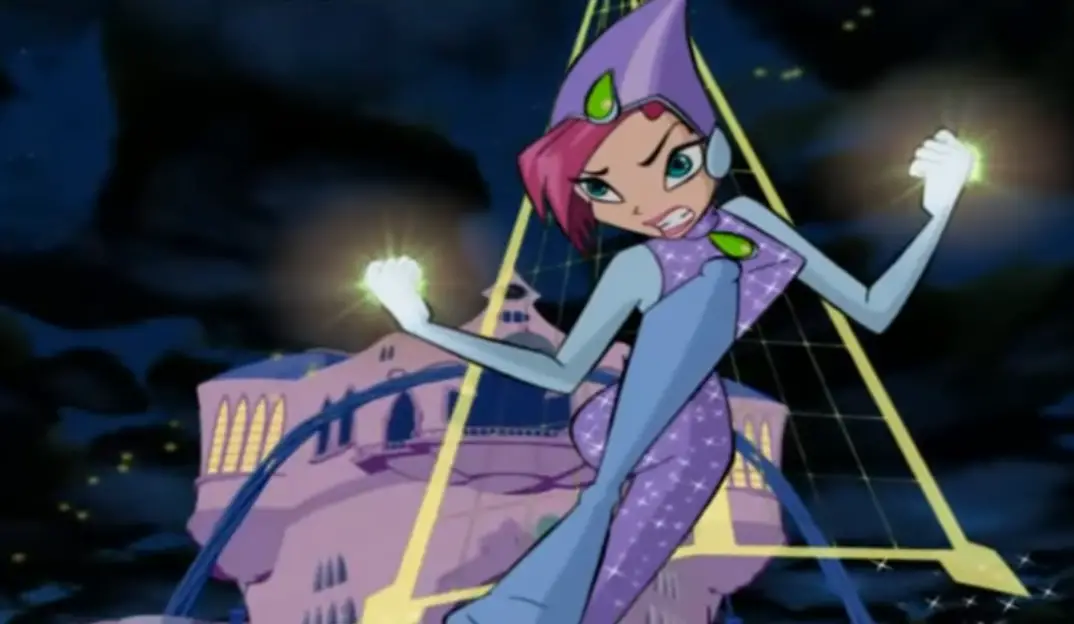
Her powers were analysis and hacking and stuff like that. Musa used to have music powers that sometimes had her attacking people with disco balls. Not your average magical girl powers, hm? But no, no budget for sci-fi elements, I guess. Generic is fine.
The School
Magic Schools are kind of a special interest of mine, but I am going to keep this as brief as I can.
In the cartoon, Alfea was like, a fully fledged out school with different teachers and subjects and tests and the like. In the reboot, we see three teachers, two of which the girls are maybe taught by, and exactly one class, generic magic class for everyone.
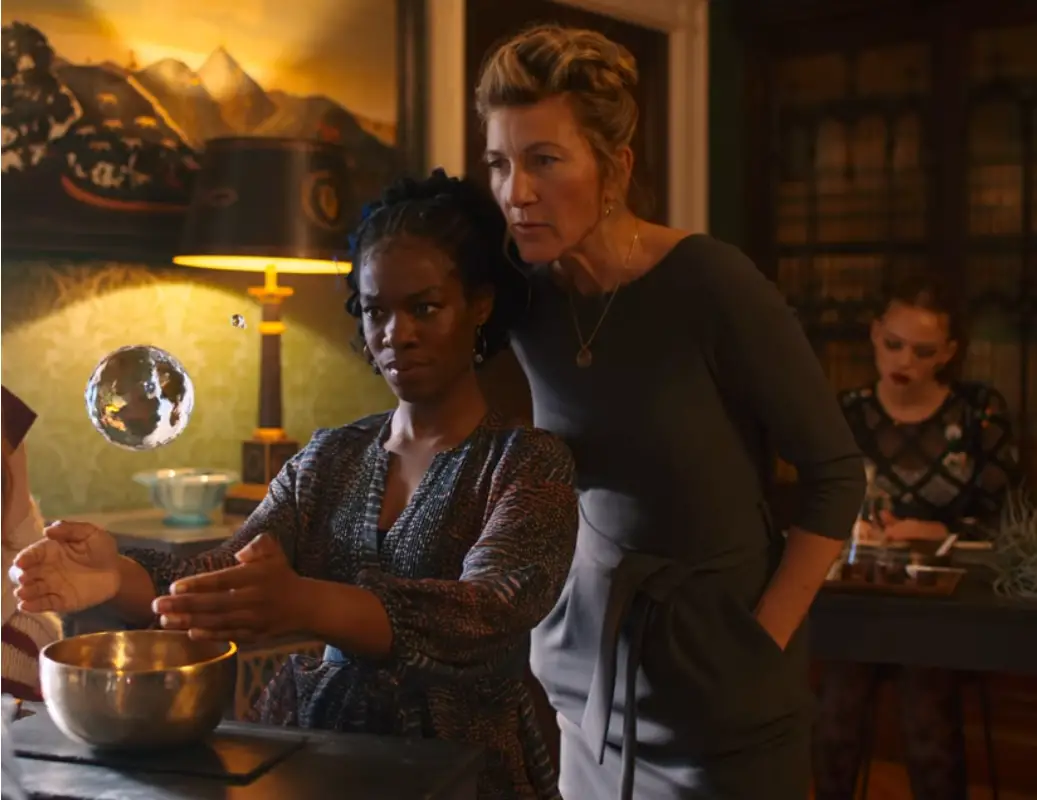
Magic in this is also… Weird. As in, for the first season, every fairy gets one kind of elemental power, but it is implied they’re going to get more in the following years of study, and we seen grown up fairies accessing different kinds of elementals.
But for now, it’s like bending. Which, depending on how much you agree with me on the magic looking fine usually, is either good or bad news for that Avatar… thing they’re also doing.
The cartoon also had each fairy have their specialty element but they also learned, like, generic magical school stuff. Useful everyday spells not related to any element. Whimsical stuff. And we’re all out of whimsy.
Cartoon!Alfea also had a hardass potions teacher, by the way. Why did this become a thing? Why do so many people feel the need to work through issues with their chemistry teachers when gym teachers are where it should be at? Though to be fair, The Worst Witch definitely did have issues there, too, so good for Jill Murphy. Who should get all the credit for generic British magical school settings, by the way, just saying.
(There is a high budget The Worst Witch adaptation on Netflix, starring Lyanna Mormont as the main character for all but one season, go check it out.)
(For real, that girl has just been cast as Ellie for a live action adaptation of The Last Of Us that is apparently happening and will get the worst kinds of gamers and their hatred unleashed on her, support her work!)
But I digress.
Besides the generic magic class, there’s implied to be two other subjects. Something related to plants that might eventually let you make potions, and, uh…
…Celtic runes?
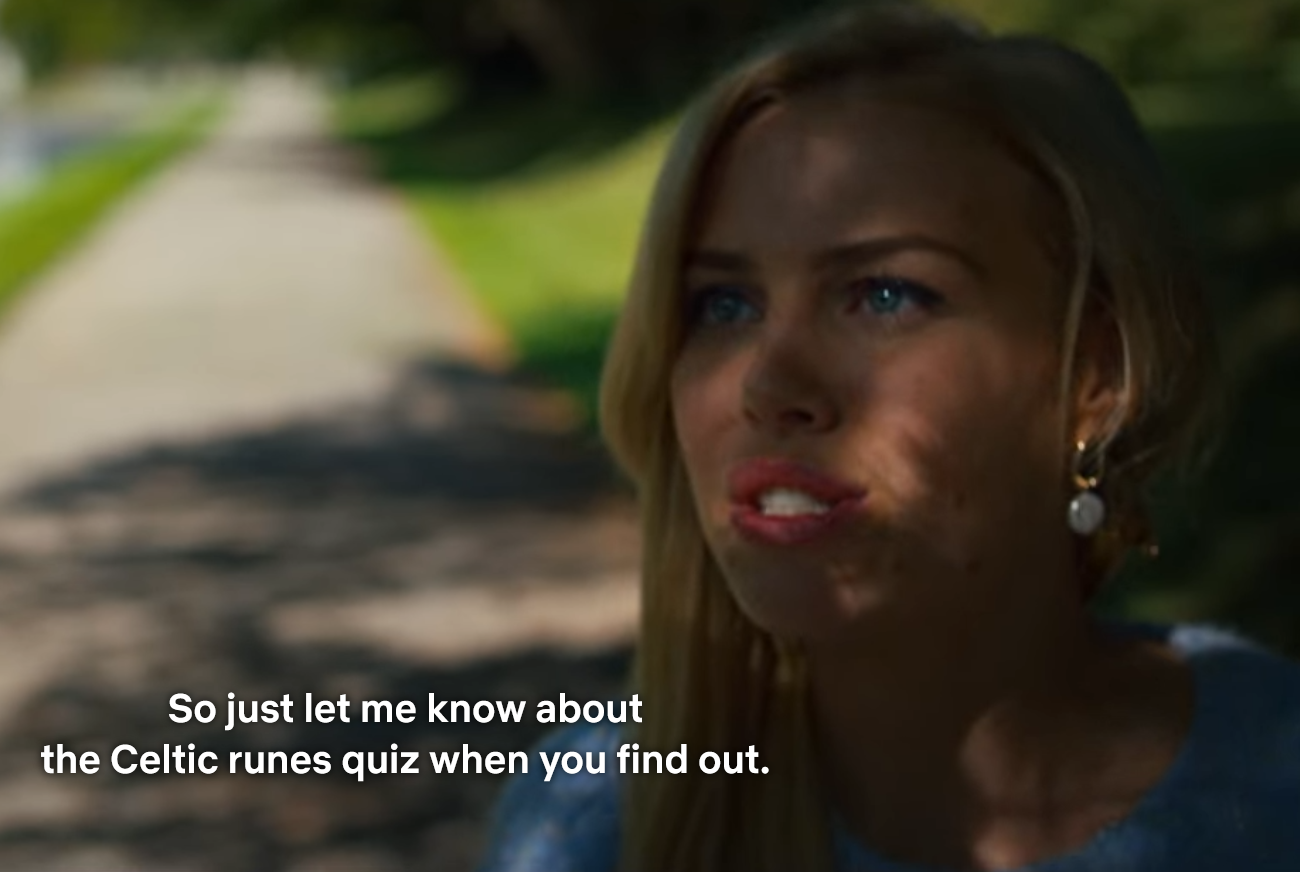
God, this drives me nuts. Okay. So I get that Celtic sounds magical and mystical and stuff. To us. But there is very explicitly no one and nothing magical on earth. Nothing. Why would they be learning Celtic runes? Are there Solarian Celts, as a counterpoint to all the Brits? Did all the real magical Celts get ported to the Otherworld? MAKE IT MAKE SENSE. There’s nothing I abhor more than obviously lazy world building. Putting in some fantasy word to imply there’s a magic equivalent of Celtic runes or Latin or whatever would have been so much better world building! But no, just, say Celts. That sounds magical.
There is, however, something they actually improved upon in this remake! So first of all, Alfea isn’t just a school for fairies, it is also for specialists, who are the trained child soldiers who do non-magical combat. That’s consistent between both versions, just that they had an entirely different school for the specialists, and they were all male. And all fairies and witches were female.
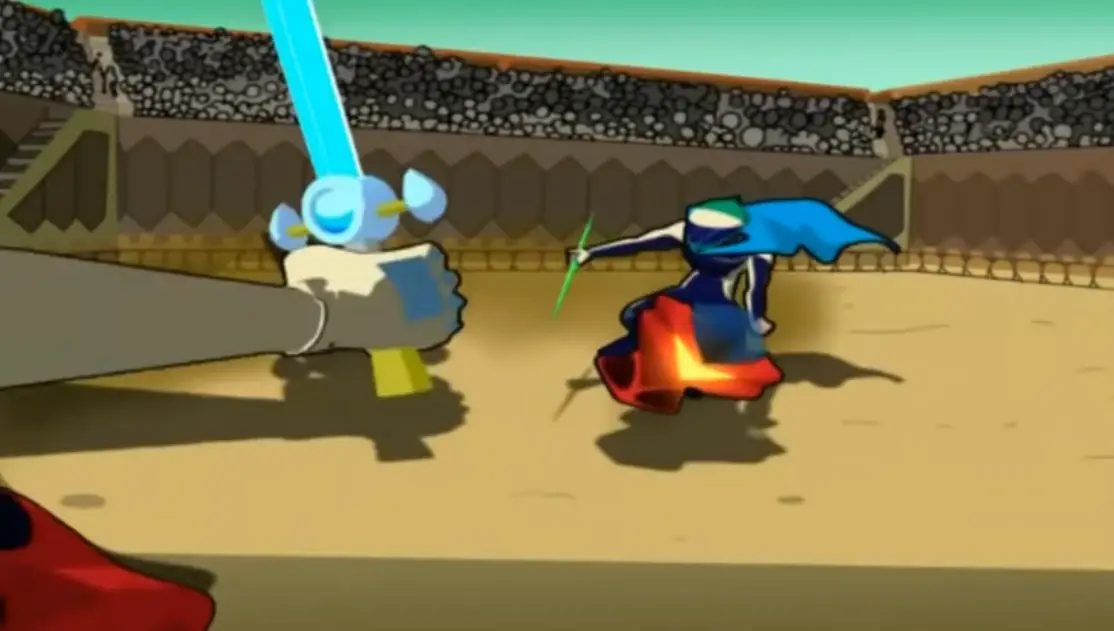
In this, there are no witches (kinda), fairies and specialists go to the same school, and there’s male fairies and female specialists and that’s just how it is. I like that! That is an improvement! With the unfortunate side-effect that all main characters are either female fairies or male specialists, and there’s only like one female specialist with a name and a few lines, very, very briefly.
This has the… Effect that everyone, the main girls, the love interests, and the villain, attend the same school. In the original, they went to three different schools and up until two of them were invaded and taken over in season one, the plot had to come up with convenient reasons for them all to meet. Which let us see the techno-magical college town where everyone could hang out together, a change of scenery this show desperately needed. In the other hand, I do feel that the love interests are maybe present a little too much in the reboot, so it’s a bit of a mixed bag.
And in case you’re wondering, the original’s distinction between witches and fairies was mostly aesthetical; fairies could transform. They learned different types of magic, but when we see headmistress fairy and headmistress witch fight together, it’s, like, not that different and seems to be really more of an aesthetic and attitude-based choice. The reboot mentions witches… In a very different context and I have no idea where the distinction is. It’s just that without the transformation and the wings, calling them fairies in the first place seems… Odd.
(Also the goddamn title of the show makes very little sense but shhh.)
This is how teenagers talk, right?
“Whilst I appreciate that it is the historical perspective of the patriarchy to save women from upsetting situations, I’ve got this.”
Yeah, so. This show does the very Netflix thing in that it tries to appropriate terms and phrases from The Discourse™ as witnessed on Twitter, puts them through a blender, and then makes it come out of the characters’ mouths. Specifically the teenagers, to be precise. It’s… jarring.
The above example is probably the worst one, said by Terra to her father and brother before confronting someone who has kind of publicly humiliated her? It’s a bit of a hairy issue because some things on this show are blown way out of proportion and others… Downplayed. A lot.
Anyway, we also start off strong by having Bloom, our protagonist, be lost and then approached by Sky. Her future love interest. He kind of negs her about being lost, then points out buildings to her, like the Specialist Hall. When she mutters that she has no idea what that is and he offers to explain it, she accuses him of mansplaining.
Deep breaths.
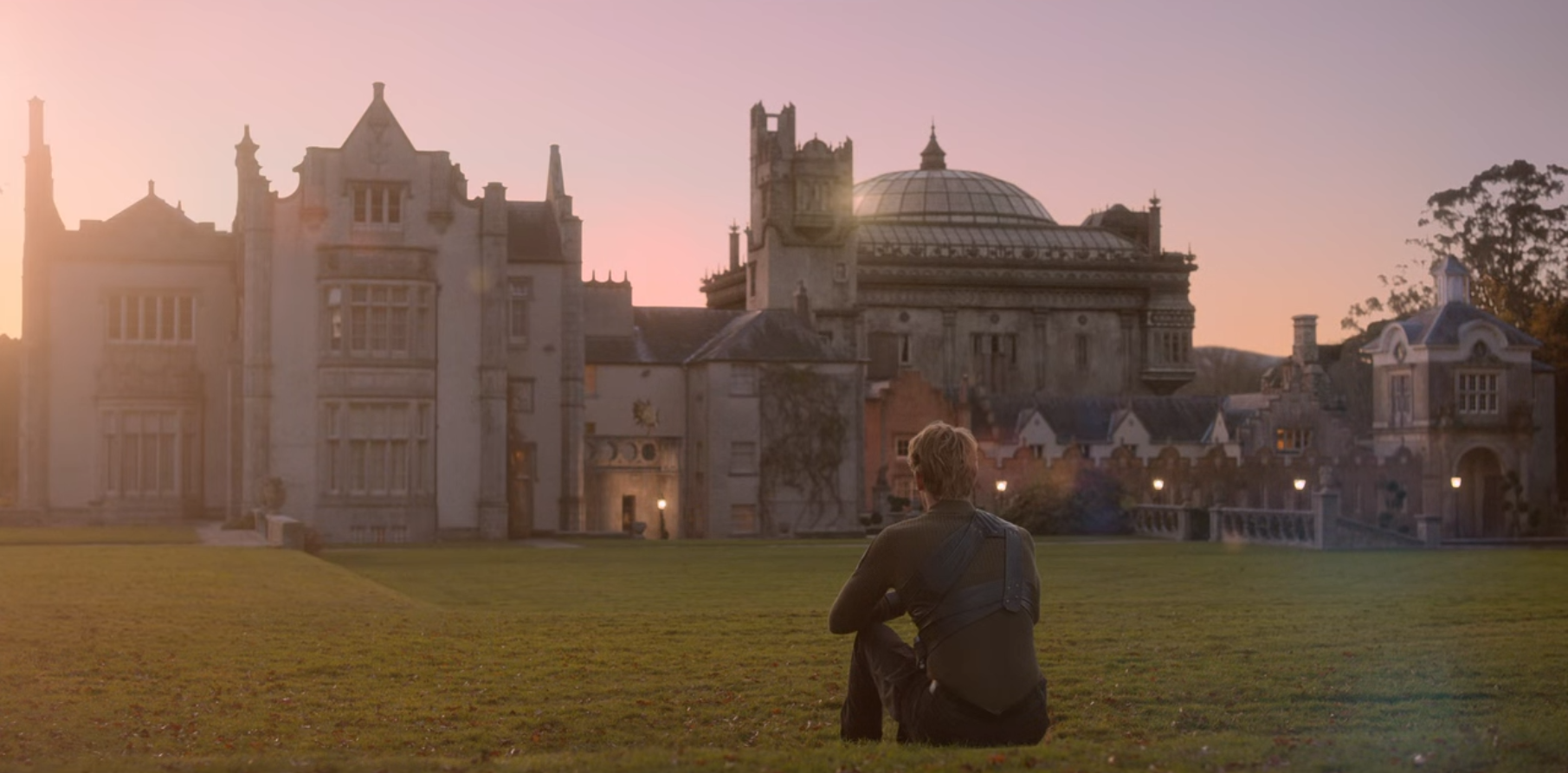
Say it with me, children. Mansplaining means a cis man trying to explain something to basically anyone who isn’t a cis man, but usually women, that the other person has just as much, if not more, knowledge of as he does, and usually in a condescending way. It does not mean a man explaining literally anything, especially not to someone who genuinely has no clue what is going on, and said as much just seconds before. Overusing the term makes it meaningless. I mean, it basically is already. Still. This is bad writing. And inept pandering.
(Spoiler: I could end the analysis here. Most things in this show are bad writing and inept pandering.)
Speaking of which, there is also a scene between two guys in which one accuses the other of doing something “like a girl.” The other guy describes that they don’t have the time to get into the gendered implications of that statement right now. Yay, he drank his respect women juice or whatever. Except he didn’t because he did the whole public humiliation thing mentioned in the beginning.
You know what should really be explored? Why a magical parallel universe full of women with magical powers, women who fight as soldiers, women who command armies, women who rule nations, women in positions of power all around would even have our gender roles, our kind of patriarchy, and our contemporary twitter discourse about these issues. I mean, from the amount of women in positions of authority that no one remarks upon, you’d think that magic served as an equalizer when it comes to the access of power. But hey, as I said before, no one really put much thought into the world building from the get-go.
So now let’s move on to something they did put quite a bit of though into, of all things.
The Plot
The plot is fine.
That’s probably the most frustrating thing about this entire undertaking. The plot, comprised of the mystery behind Bloom’s parents and past and the attacks by scary zombie-esque burned creatures on the school all being part of a larger conspiracy and cover-up of war crimes and so on, is absolutely fine. It’s even, in theory, competently executed. To an extent that I watched the twist at the very end of the show and was like oh no, I’ll have to watch season 2 of this.
Does it have anything to do with the original series? Nope! Well. Outside of like, war and attack on the school and some cult stuff. The original series was not short on child soldiers, believe you me. But this plot is mostly unrelated to that, except for a few nods regarding character stuff like the Dragon Flame, it is completely its own thing. And probably the best thing about this show.
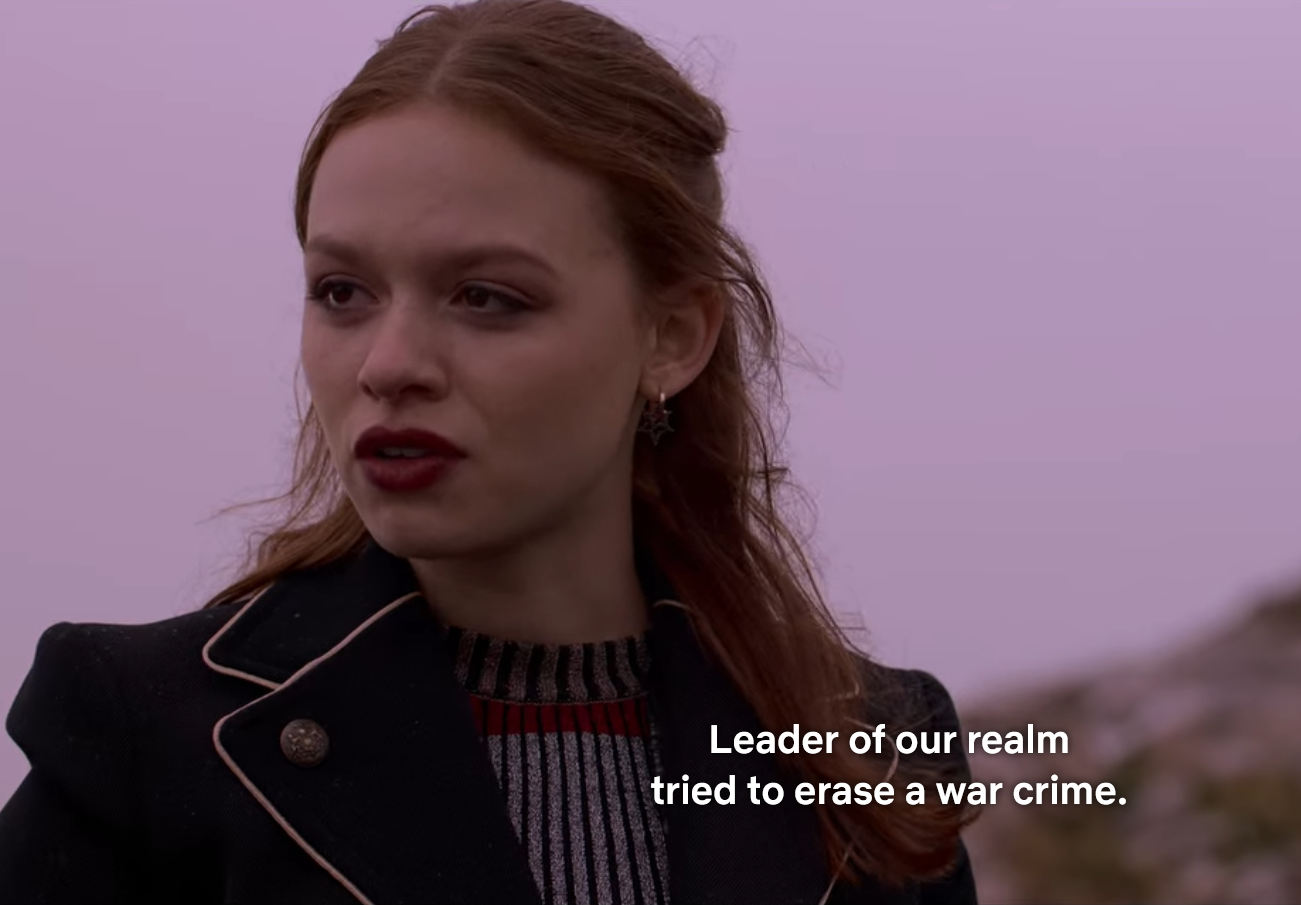
Sure, an orphan’s mysterious past and parentage is not exactly an original story. Neither are zombie take-overs. I have watched a lot of anime in my youth, so I have definitely seen my share of child soldiers being made to fight battles that should really be fought by adults, but no one sees anything wrong with having the 16/14/12 year olds do it. But the way we are fed bits and pieces about Bloom’s origins and led along through a pretty twisted maze of possible conspiracies while we’re given hints as to what happened with the Burned Ones and how militaristic this school used to be and how it’s all connected… It’s pretty good.
The show does an excellent job at throwing just enough crumbs at us each episode to make it feel like the plot is moving fast (which it kind of has to with only 6 episodes), the mystery is progressing, and to sow just enough seeds of doubt to buy into the grand conspiracy.
Yeah, the world building is a little lackluster in places, and the whitewashing is what it is. And that makes the good plot even more frustrating, if you ask me. But there’s something else a good plot can’t save you from – and that is horrible, unlikeable characters. And when the characters are the weakest part of your character driven show about female friendships and fighting evil together, you have a big, big problem.
A big, big problem we’ll get into next time, in Part 2!
Images courtesy of Netflix and RAI
Have strong thoughts about this piece you need to share? Or maybe there’s something else on your mind you’re wanting to talk about with fellow Fandomentals? Head on over to our Community server to join in the conversation!

